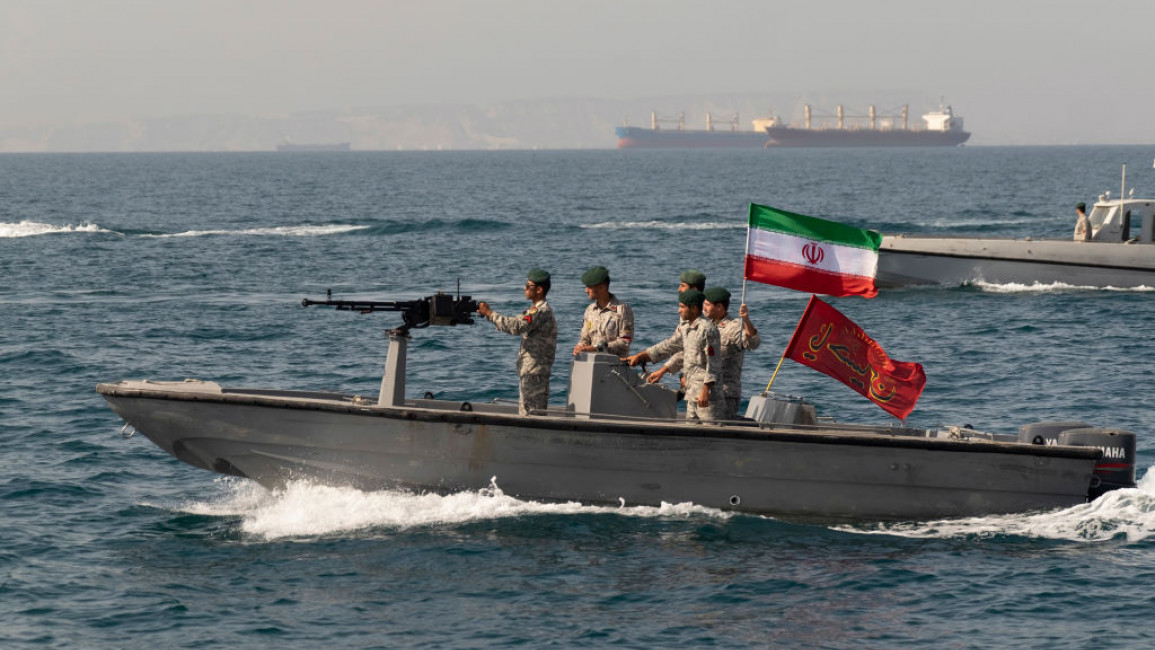Iranian hardline newspaper editor suggests closing key Strait of Hormuz over protests
A hardline newspaper close to Iran's ruling clerics on Wednesday suggested authorities close the Strait of Hormuz, a crucial waterway for global energy supplies, in response to alleged foreign support for the nationwide protests gripping the country.
The suggestion came from the editor-in-chief of the hardline Kayhan newspaper, who is appointed by Supreme Leader Ayatollah Ali Khamenei, in an editorial that could be seen as a trial balloon.
"Closing the Strait of Hormuz to Western countries' oil tankers and commercial vessels is Iran's legal right," Hossein Shariatmadari wrote.
"We can even seize a part of their commercial cargo as compensation for the financial damage they have done to our country."
It's not the first time Shariatmadari has proposed closing the strait, through which around one-third of all oil traded by sea passes.
The narrow waterway at the mouth of the Persian Gulf has seen a number of tense encounters over the years.
Any attempt to close it would risk a major confrontation with the United States, which has pledged to ensure the free flow of commerce, and could roil international oil markets.
The protests erupted in September following the death of 22-year-old Kurdish Iranian Mahsa Amini, who had been detained by Iran's morality police for allegedly violating strict dress codes for women. Amini's Kurdish first name can be spelt "Zhina" or "Jina".
The demonstrations rapidly spread across the country and mark one of the biggest challenges to Iran's theocracy since the 1979 revolution that brought it to power.
Iran has blamed the protests, and attacks on security forces, on foreign countries, without providing evidence.
The protesters deny any foreign agenda and say they are fed up after decades of social and political repression by leaders they view as corrupt and out of touch.
Security forces have cracked down on the demonstrations, with rights groups accusing them of firing live ammunition, bird shot and tear gas at protesters, as well as beating and arresting them.
At least 494 protesters have been killed since September and more than 18,000 have been arrested, according to Human Rights Activists in Iran, a group that has been closely monitoring the unrest.
It says at least 62 security forces have been killed. Iranian authorities have given a far higher death toll for security personnel, blaming attacks on unnamed separatists and militants.
Trigger warning: this video contains graphic execution images
The Islamic Republic on Monday hanged a man in public who state media said had been convicted of killing two members of the security forces, the second execution in less than a week of people involved in the protests.
The Supreme Court on Wednesday halted the execution of a third individual, Mahan Sedarat, according to Mizan, the official news agency of the judiciary.
Earlier this month, Sedarat's family told the reformist newspaper Shargh that his death sentence had been confirmed.
He was accused of wounding someone with a knife, acting against national security, setting a motorbike on fire and destroying a mobile phone. His family said he denied the charges.
Like the other two, he was convicted of "moharebeh", a Farsi word meaning "waging war against God", which carries the death penalty.
He was tried in Revolutionary Court, which typically holds closed-door trials and has come under heavy international criticism.
(AP, Reuters)


![President Pezeshkian has denounced Israel's attacks on Lebanon [Getty]](/sites/default/files/styles/image_684x385/public/2173482924.jpeg?h=a5f2f23a&itok=q3evVtko)



 Follow the Middle East's top stories in English at The New Arab on Google News
Follow the Middle East's top stories in English at The New Arab on Google News


